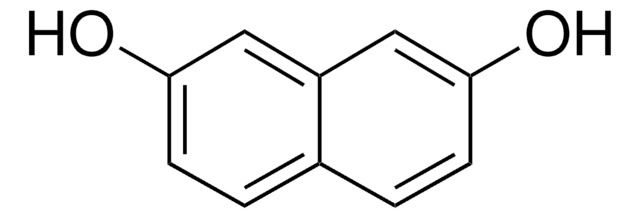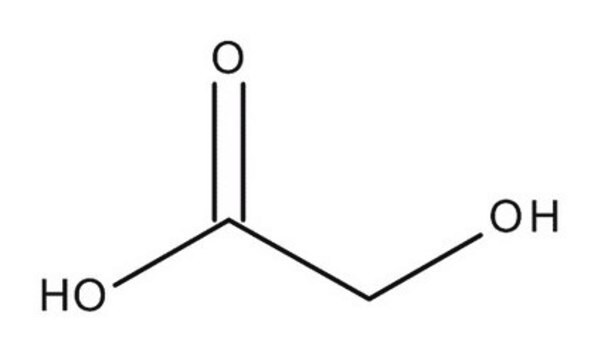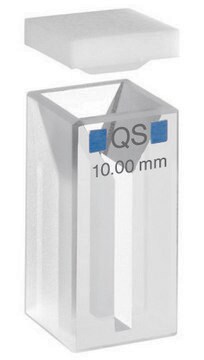8.20851
2,7-Naphthalenediol
for synthesis
Synonyme(s) :
2,7-Naphthalenediol, 2,7-Dihydroxynaphthalene
About This Item
Produits recommandés
Niveau de qualité
Essai
≥98.0% (HPLC)
Forme
powder
Pf
184-187 °C
Masse volumique apparente
600‑700 kg/m3
Température de stockage
2-30°C
Chaîne SMILES
Oc1cc2c(cc1)ccc(c2)O
InChI
1S/C10H8O2/c11-9-3-1-7-2-4-10(12)6-8(7)5-9/h1-6,11-12H
Clé InChI
DFQICHCWIIJABH-UHFFFAOYSA-N
Application
- Photoelectric Properties of Carbon Quantum Dots: Investigates the synthesis and high fluorescent quantum yield of green carbon quantum dots, where 2,7-naphthalenediol serves as a precursor, enhancing the photoelectric properties for potential applications in optoelectronic devices (Zheng et al., 2020).
- Fungal Melanogenesis Mimicry for Coatings: Describes the use of dihydroxynaphthalene, derived from 2,7-naphthalenediol, in creating multifunctional coatings that mimic fungal melanogenesis, showcasing its application in protecting materials and increasing their durability (Jeon et al., 2016).
- Catalytic and SERS Activities of Nanoclusters: Discusses the role of 2,7-naphthalenediol in enhancing the catalytic and Surface-Enhanced Raman Scattering (SERS) activities of osmium nanoclusters, which are crucial for chemical sensing and catalytic applications (Ede et al., 2014).
- Shape-Selective Pt Nanoparticles: Details the photoinduced formation of shape-selective platinum nanoparticles, where 2,7-naphthalenediol could potentially act as a reducing agent, influencing the synthesis process in photoreactive nanomaterial production (Kundu and Liang, 2010).
- Glycolate Testing in Microbial Cells: Presents a new rapid glycolate testing method using diethyl ether extraction suitable for small bacterial cell samples. While primarily a methodological study, it highlights the broader potential applications of reagents like 2,7-naphthalenediol in biochemical testing (Uchida et al., 1999).
Remarque sur l'analyse
Identity (IR): passes test
Mention d'avertissement
Warning
Mentions de danger
Conseils de prudence
Classification des risques
Eye Irrit. 2 - Skin Irrit. 2 - STOT SE 3
Organes cibles
Respiratory system
Code de la classe de stockage
11 - Combustible Solids
Classe de danger pour l'eau (WGK)
WGK 2
Point d'éclair (°F)
Not applicable
Point d'éclair (°C)
Not applicable
Certificats d'analyse (COA)
Recherchez un Certificats d'analyse (COA) en saisissant le numéro de lot du produit. Les numéros de lot figurent sur l'étiquette du produit après les mots "Lot" ou "Batch".
Déjà en possession de ce produit ?
Retrouvez la documentation relative aux produits que vous avez récemment achetés dans la Bibliothèque de documents.
Les clients ont également consulté
Notre équipe de scientifiques dispose d'une expérience dans tous les secteurs de la recherche, notamment en sciences de la vie, science des matériaux, synthèse chimique, chromatographie, analyse et dans de nombreux autres domaines..
Contacter notre Service technique













